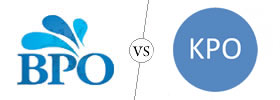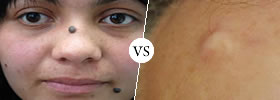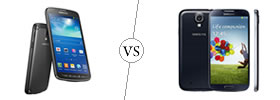Difference between Asus FonePad and iPad
Key Difference: Asus has announced the launch of newest phablet, the Asus Fonepad. The Fonepad is a 7-inch Android tablet that allows users to also make phone calls by placing the device on their ear. The phablet sports a 7-inch IPS LED backlit touch screen that allowed multitouch capability for up to 10 people. The screen has a resolution of 1280 x 800, which provides approximately 216 ppi density, a decent enough resolution. iPads have the screen size of 9.7 inches with multi-touch display. iPads are intended as devices for a multimedia experience, reading e-books, watching movies, listening to music, playing games, browsing the Internet, or retrieving e-mail.
 Asus has announced the launch of newest phablet, the Asus Fonepad. The company states that the purpose of launching this phone is to bridge the gap between the phone and the tablet, eliminating the need for the carrying to separate devices. The Asus Fonepad is practically a tablet that has phone call making capabilities. The Fonepad is a 7-inch Android tablet that allows users to also make phone calls by placing the device on their ear. Some people may find it silly to place such a huge device on their ear to make calls; for those people the tablet does allow connectivity with a Bluetooth device.
Asus has announced the launch of newest phablet, the Asus Fonepad. The company states that the purpose of launching this phone is to bridge the gap between the phone and the tablet, eliminating the need for the carrying to separate devices. The Asus Fonepad is practically a tablet that has phone call making capabilities. The Fonepad is a 7-inch Android tablet that allows users to also make phone calls by placing the device on their ear. Some people may find it silly to place such a huge device on their ear to make calls; for those people the tablet does allow connectivity with a Bluetooth device.
The Asus Fonepad has borrowed a bunch of features from the Nexus 7, which was also created under Google and Asus collaboration. The weight, dimension and the display are all similar to the Nexus 7; however, the company has replaced the back. The plastic-leather back of the Nexus 7 has been replaced with a slick, steel casing. The device is available in titanium gray and champagne gold colors. The phablet sports a 7-inch IPS LED backlit touch screen that allowed multitouch capability for up to 10 people. The screen has a resolution of 1280 x 800, which provides approximately 216 ppi density, a decent enough resolution. Under the hood, the phablet runs on 1.2 GHz single-core Intel Atom processor, making it pretty fast for multi-tasking, along with playing some high-res games. The device has 1 GB RAM.
There will be two versions of the tablet, one for Europe, the other for Asia. The launch regarding rest of the World has yet to be revealed. The European variant will have 16 GB internal storage capacity, with no rear camera. However, the Asian variant will 8 GB internal storage capacity and will house a 3.2 MP rear camera. Both the variants will house 1.2 MP front camera for video conferencing. The phablet will not support 4G capabilities. The phablet will be available with preloaded Android v4.1 Jelly Bean, with no announcements yet regarding if it is upgradeable to the newest version. The internal storage capacity can expanded up to 32 GB using a MicroSD. One of the most prominent features of the phablet is the massive battery that has been mounted on the device. The non-removable Li-Ion 4270 mAh battery allows the phone to support 32.5 hours of talktime on 3G and 751 hours of standby time. There is no proper release date for the phone, with the expected release to be around April or May 2013.

Apple originally launched iPad in 2010. Its launch started a new trend for tablets. iPad is a type of tablet PC, which was originally promoted as a cross between an Apple iPhone and iPod Touch with added capabilities of computing. However, it is not meant to be a replacement for desktop personal computers or laptops. iPads have computational properties that can do some tasks as laptops but not all.
iPads have the screen size of 9.7 inches with multi-touch display, that provides approximately 264 pp density. The screen has a scratch-resistant glass and an oleophobic coating that keeps fingerprints on the screen and the back. iPads are intended as devices for a multimedia experience, reading e-books, watching movies, listening to music, playing games, browsing the Internet, or retrieving e-mail. It has a software structure more like that of a mobile phone. It also has a very simple user interface, which can even be easily operated by children. iPads are available with a memory capacity of 16 GB, 32 GB, 64 GB and 128 GB.
The device runs on 1.4 GHz dual-core processor and has a 1GB RAM. The iPad has been called the best iPad of all the four generations. The iPad is powered by the new Apple A6X chipset. The device has a 5MP rear camera for taking photos and a 1.2MP front camera for video calling capability. The camera also has video recording capability and can record 1080p@30fps and has video stabilization. The iPad has a 42.5-watt non-removable lithium-polymer battery. The iPad is available in models supporting only Wi-Fi, or 3G and Wi-Fi. However, iPad lacks Flash, software that a number of websites use to display content. So, iPad cannot load these pages. This limits the web surfing experience. The fourth-gen iPad is similar to its predecessors, while it still has two minor and one major upgrade on it. The 30-pin connector has been upgraded to a smaller Lightning connector, while the front camera has been upgraded to the HD Status. The major upgrade is the new A6X processor that replaced the A5X processor on the third-gen.
The information for the detailed table about the two phones has been taken from the Asus website, trustedreviews.com, pcworld.idg.com.au, Apple website and GSMArena.com.
|
|
Asus Fonepad |
iPad (4th generation) |
|
Launch Date |
Expected April 2013 |
November 2, 2012 |
|
Company |
Asus |
Apple |
|
Size |
196.4 x 120.1 x 10.4 mm |
241.2 x 185.7 x 9.4 mm (9.50 x 7.31 x 0.37 in) |
|
Display |
7" LED Backlight WXGA IPS Panel touch screen |
9.7 inches LED-backlit IPS LCD, capacitive touchscreen, 16M colors |
|
Screen |
1280x800 (~216 ppi pixel density) |
1536 x 2048 pixels, (~264 ppi pixel density) |
|
Protection |
N/A |
Scratch-resistant glass, oleophobic coating |
|
Weight |
340 g |
652g (1.44 lb) 662g (1.46 lb) for 3G model |
|
2G Network |
GSM 850 / 900 / 1800 / 1900 |
(Wi-Fi + Cellular Model) GSM 850 / 900 / 1800 / 1900 - A1459/ A1460 (Wi-Fi + Cellular Model) CDMA 800 / 1900 / 2100 - A1460 |
|
3G Network |
WCDMA: 850/900/1900/2100 HSDPA 850 / 900 / 1900 / 2100 |
(Wi-Fi + Cellular Model) HSDPA 850 / 900 / 1900 / 2100 - A1459/ A1460 (Wi-Fi + Cellular Model) CDMA2000 1xEV-DO - A1460 |
|
4G Network |
N/A |
(Wi-Fi + Cellular Model) LTE 700 MHz Class 17 / 1700 / 2100 - A1459 (Wi-Fi + Cellular Model) LTE 700 / 850 / 1800 / 1900 / 2100 - A1460 |
|
GUI |
Asus UI |
iUI |
|
CPU speed |
1.2 GHz Single-core Intel Atom |
Dual-core 1.4 GHz |
|
GPU |
PowerVR SGX540 |
PowerVR SGX554MP4 (quad-core graphics) |
|
OS |
Android OS v4.1 (Jelly Bean) |
iOS 6 |
|
Chipset |
Intel Atom Z2420 |
Apple A6X |
|
RAM |
1 GB |
1 GB |
|
SIM Size |
microSIM |
Micro-SIM for 3G model |
|
Internal Memory |
8/16 GB |
16/32/64/128 GB |
|
Expandable Memory |
Up to 32 GB |
None |
|
Sensors |
GPS & Glonass,G-Sensor, E-compass, Proximity, Ambient Light Sensor |
Accelerometer, Gyroscope, compass |
|
Connectivity |
GSM, HSDPA, WCDMA, Bluetooth, USB, WLAN802.11 |
Wi-Fi + Cellular Model
Wi-Fi + Cellular Model (MM)
Data only All Models 802.11a/b/g/n Wi-Fi (802.11n 2.4GHz and 5GHz) Bluetooth 4.0 wireless technology |
|
Data |
GPRS, EDGE, WLAN, Bluetooth, USB |
WiFi, USB GPRS, EDGE, LTE for Wi-Fi + Cellular Model |
|
Speed |
HSDPA 21 Mbps, HSUPA 5.76 Mbps |
DC-HSDPA, 42 Mbps; HSDPA, 21 Mbps; HSUPA, 5.76 Mbps, LTE, 73 Mbps; EV-DO Rev. A, up to 3.1 Mbps |
|
WLAN |
WLAN802.11 b/g/n |
Wi-Fi 802.11 a/b/g/n, dual-band, Wi-Fi hotspot |
|
Bluetooth |
Bluetooth V3.0 |
Bluetooth v4.0 with A2DP |
|
USB |
microUSB v2.0 |
USB v2.0, special lightening charger |
|
Primary Camera |
3.2 MP autofocus camera |
5 MP, 2592 x 1944 pixels, autofocus |
|
Secondary Camera |
1.2 MP |
Yes, 1.2 MP, 720p@30fps, face detection, FaceTime over Wi-Fi + Cellular |
|
Video |
720p |
1080p@30fps, video stabilization |
|
Camera Features |
Autofocus |
Touch focus, geo-tagging, face detection |
|
Sound Enhancement |
Active noise cancellation with dedicated mic; Asus Sonice Master audio technology with MaxxAudio 3 by Waves |
- |
|
Audio supported formats |
MP3/WAV/eAAC+ player |
AAC (8 to 320 Kbps), Protected AAC (from iTunes Store), HE-AAC, MP3 (8 to 320 Kbps), MP3 VBR, Audible (formats 2, 3, 4, Audible Enhanced Audio, AAX and AAX+), Apple Lossless, AIFF and WAV |
|
Video supported formats |
MP4/H.264/H.263 player |
H.264 video up to 1080p, 30 frames per second, High Profile level 4.1 with AAC-LC audio up to 160 Kbps, 48kHz, stereo audio in .m4v, .mp4 and .mov file formats; MPEG-4 video up to 2.5 Mbps, 640x480 pixels, 30 frames per second, Simple Profile with AAC-LC audio up to 160 Kbps per channel, 48kHz, stereo audio in .m4v, .mp4 and .mov file formats; Motion JPEG (M-JPEG) up to 35 Mbps, 1280x720 pixels, 30 frames per second, audio in ulaw, PCM stereo audio in .avi file format |
|
Battery Capacity |
Non-removable Li-Ion 4270 mAh battery (16 Wh) |
Built-in 42.5-watt-hour rechargeable lithium-polymer battery |
|
Talktime |
3G: 32.5 hours |
- |
|
Standby Time |
3G: 751 hours |
- |
|
Available Colors |
Titanium Gray, Champagne Gold |
Black, White |
|
Messaging |
SMS(threaded view), MMS, Email, Push Email, IM |
iMessage, Email, Push Email, IM |
|
Browser |
HTML5 |
HTML (Safari) |
|
Radio |
No |
No |
|
GPS |
GPS, A-GPS, Glonass |
with A-GPS support and GLONASS |
|
Java |
Yes, via Java MIDP emulator |
None |
|
Additional Features |
|
|
Image Courtesy: asus.com, pluggedin.co.uk









Add new comment